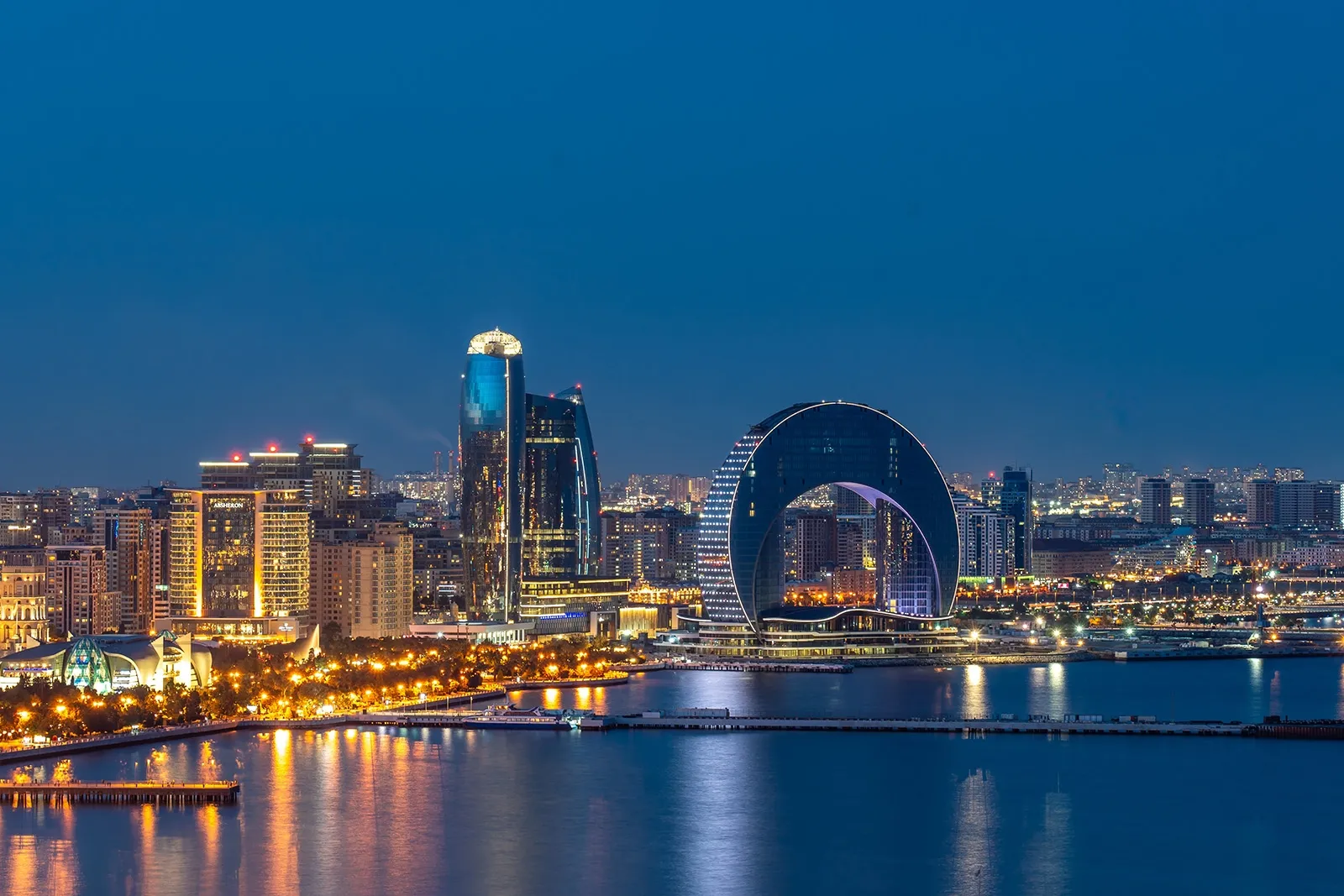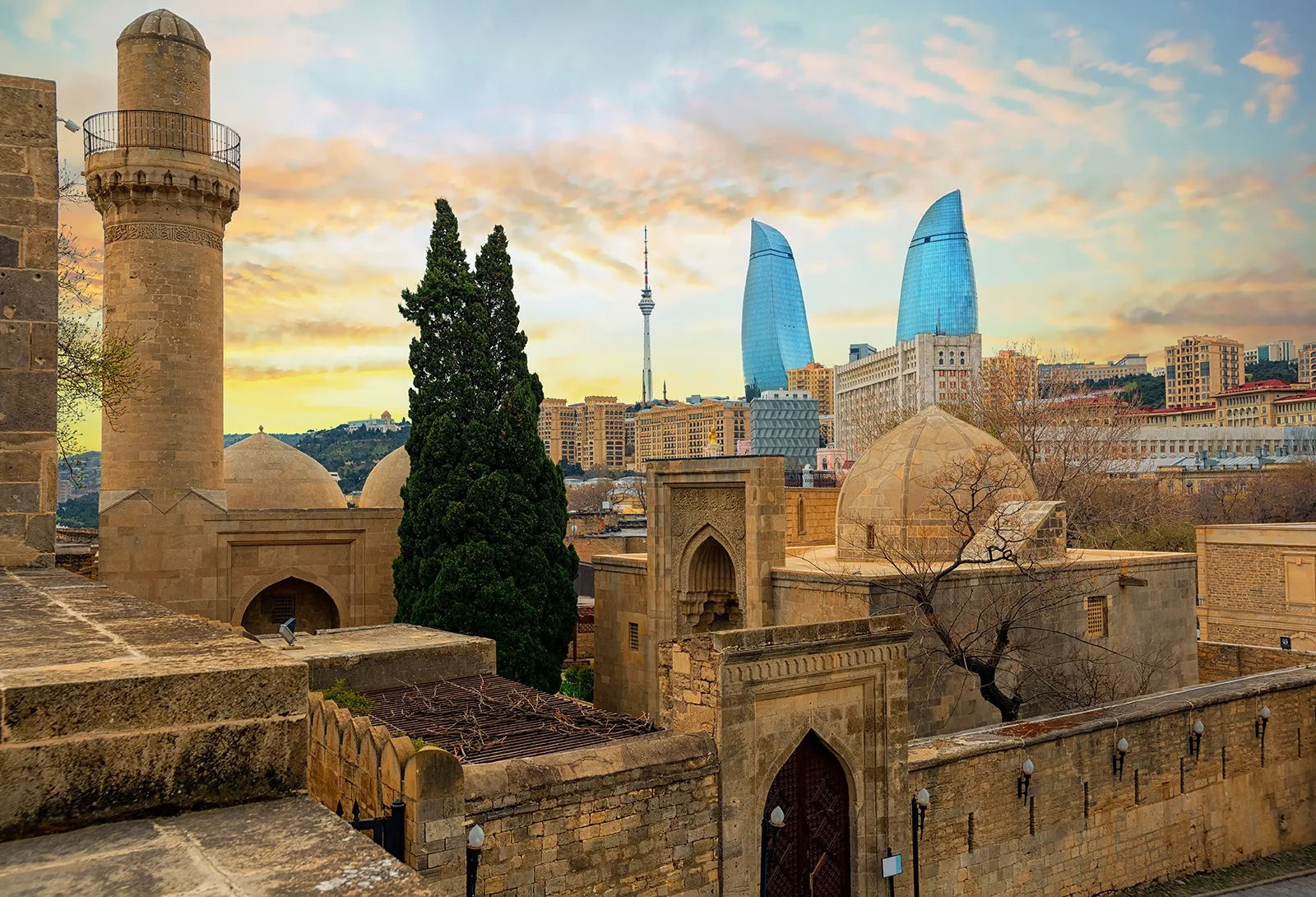Baku
The capital and the biggest city of Azerbaijan, Baku is a cultural, commercial and political center. Located on the south of Absheron peninsula, Baku lies on an ancient trade route from the Central Asian steppe towards Europe, being the main port that received trade from the east as it was shipped across the Caspian Sea. Heading westwards from Baku, merchandise would either be transported north through the Caucasus Mountains and thus to the Black Sea and to Istanbul, or would travel east, to Turkey.
Baku is a multicultural region, in the formation of which Zoroastrian, Christian and Islamic influences, and traces of Sassanian, Arabic, Iranian, Shirvan, Ottoman and Russian cultures have played a role. It became the capital of Shirvanshahs in the 12th century, after a devastating earthquake struck Shamakhi, the old capital. Following this, the city has fallen under the influence of the Safavids, the Ottomans, Russians, Iran, until finally becoming independent as Baku Khanate. From the 18th century on, Baku became a serious geopolitical target for the Russian Empire. Oil manufacturing during this period was gaining special weight and eventually changed the face and fate of the city; Nobel brothers and Rothschilds started investing in the development of oil fields and during the World Wars I and II Baku oil played a crucial role in gaining victory. In 1918, Baku was declared the capital of Azerbaijan Democratic Republic and since then, and during the Soviet SSR period, it has remained the capital and the main cultural, economic and trade center of Azerbaijan.
The historic part of Baku – Icheri Sheher was an important hub of cultural exchange, commerce, and innovation with its well-established network of roads, marketplaces, customs system, caravanserais, as well as public hammams, mosques, shrines and other city infrastructure within and outside of the city. The main exports of Baku were oil, saffron, salt, fish, and other produces. As a major port city, Baku was also a transhipment point for goods brought in to the country via sea and land routes.
Some of the most important Silk Road sites in Baku are:
- The old town – Icheri Sheher, a World Heritage Site with the Palace of Shirvanshahs and Maiden Tower;
- Several caravanserais such as Bukhara, Multani, the two-story (Gasim bey) caravanserai, Kichik (Khan) caravanserai which host restaurants and art galleries today;
- Mosques such as Sheikh Ibrahim mosque or Juma mosque, Chin mosque, Siniq Gala or Mahammad mosque and others;
- Public hammams – Agha Mikayil, Qasim bey hammam, the Palace Hammam of Shirvanshahs and others which continue to function as public baths or have been transformed into museums;
- Ateshgah fire temple – a caravanserai and a place of pilgrimage built in a place of continuous flames blazing in Surakhani settlement near Baku. Ateshgah is a fine example of intercultural exchange, which has been attracting Hindu, Sikh and Zoroastrian pilgrims and merchants since ancient times.







